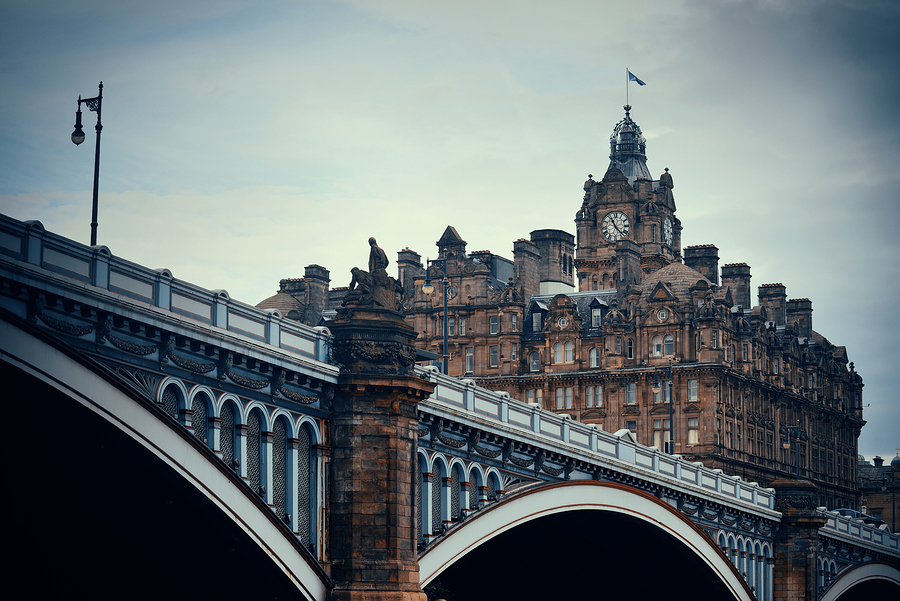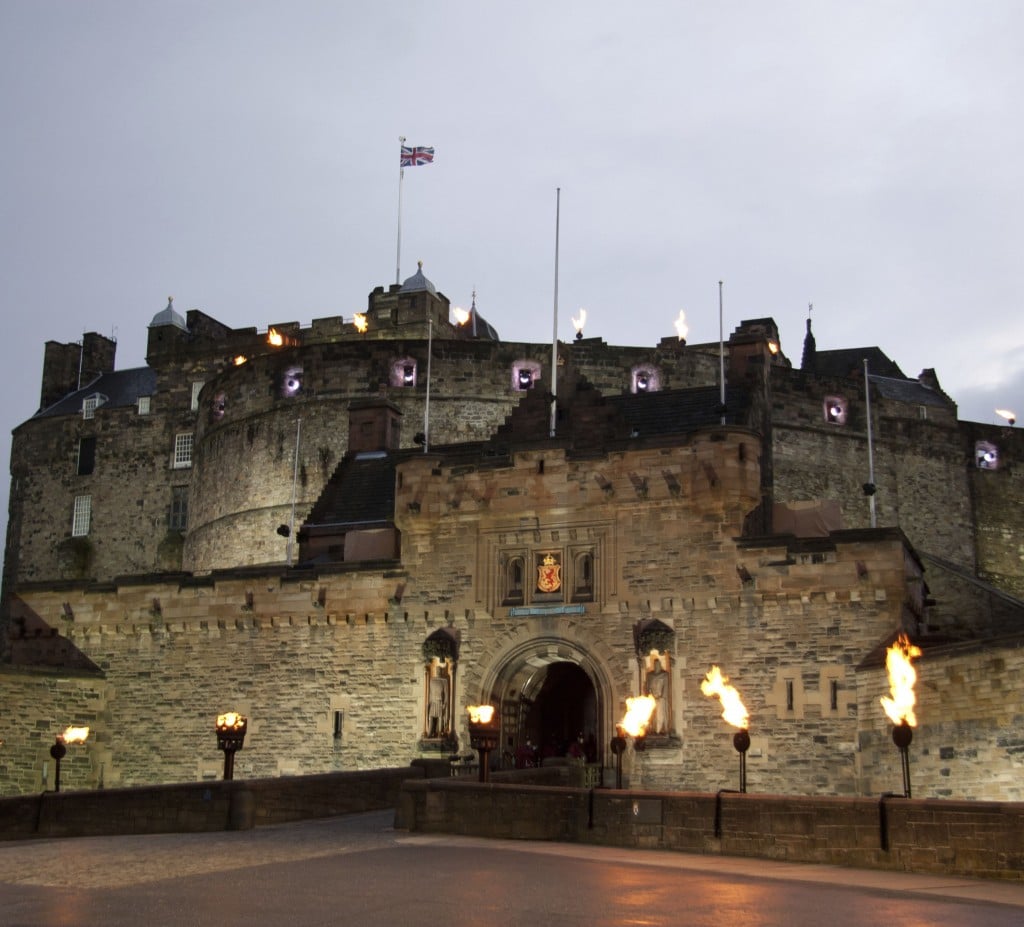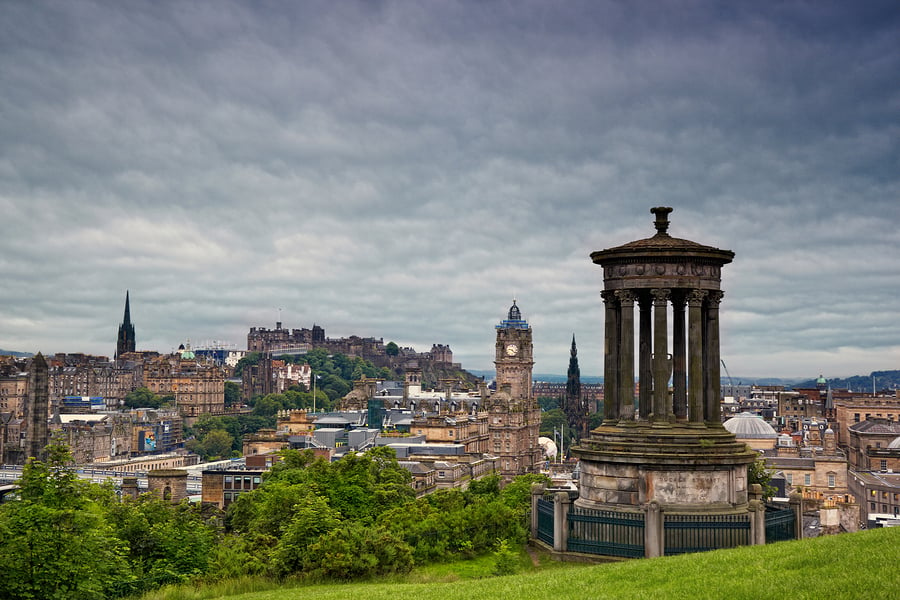A dozen or so things you never knew about Edinburgh
The thirteenth in our series of 'I never knew that about the beauty spots of Britain'
Britain is the most beautiful country in the world when the sun shines. And even when it doesn’t there are myriad tales and facts galore to enhance the beauty, whatever the weather. Here are some of them – they may make you want to go there….
A dozen or so things you never knew about Edinburgh (maybe)
- Edinburgh, Scotland’s capital and the home of Hogmanay, is one of the most beautiful cities in the world. It is, in fact, two beautiful cities in one, the medieval Old Town, a tangle of hidden courtyards and narrow winding cobbled streets climbing the Royal Mile to the ancient castle perched on its mighty rock, and the New Town of wide boulevards and smart terraces, laid out in the mid 1700s by James Craig and the most complete and unspoiled Georgian townscape in Britain. Together Old Town and New Town form a World Heritage Site.

Balmoral Hotel bell tower with bridge and Edinburgh city view.
- Edinburgh is Britain’s second most popular tourist destination after London.
- Edinburgh is known as the ‘Athens of the North’ partly for its topography, with Castle Rock resembling the Acropolis in Athens and a cityscape spreading from these distinctive heights down to the sea, and partly from the number of Greek Revival buildings found in the city, including the unfinished National Monument on Calton Hill, built in memory of the Scottish soldiers who died in the Napoleonic Wars and modelled on the Parthenon in Athens. Edinburgh, like Athens, also experienced an Age of Enlightenment, as home, in the 18th century, to such intellectuals as philosopher David Hume, Adam Smith, the ‘Father of Economics’ and Adam Ferguson, ‘Father of Sociology’.

Edinburgh Castle
- Edinburgh Castle is Scotland’s most visited attraction and home to the world’s largest military tattoo. In 1566 it was the birthplace, of Mary Queen of Scots’ son James VI of Scotland, later James I of England. The birth was difficult and some claim that Mary’s child was stillborn and was thrown down a well in the castle and replaced by another baby belonging to Erskine, Lord of Mar. From that time on, until fairly recently, a government minister was required to be present at every royal birth to see fair play – the last time was for the birth of Princess Margaret at Glamis Castle in 1930.
- Edinburgh’s Royal Mile, which runs for just over a mile down from Edinburgh Castle to The Palace of Holyrood House, was described by Daniel Defoe as ‘the largest, longest and finest street in the world’.

The Palace of Holyrood House
- In 2004 Edinburgh became the first UNESCO City of Literature, an accolade fitting for a city that gave birth to such literary luminaries as Dr Johnson’s biographer James Boswell, Sir Walter Scott, Robert Louis Stevenson, Muriel Spark, Britain’s first circulating library, established by Edinburgh bookseller Allan Ramsay in 1725, the Encyclopedia Britannica, first produced in 1768 by William Smellie in his shop off the Royal Mile, and
- Harry Potter, the most successful literary character of all time, who was begat by J.K. Rowling in Nicolson’s Cafe at 6a Nicolson Street, just south of the Royal Mile.
- Sherlock Holmes, the world’s most famous detective, was also a son of Edinburgh. He was created by Sir Arthur Conan Doyle, who was born in Edinburgh in 1859, and inspired by the remarkable powers of deduction of Dr Joseph Bell who lectured on medicine at the University of Edinburgh. Dr Watson was based on Conan Doyle himself.
- In 1946 Edinburgh hosted Britain’s first film festival and in the following year hosted the first Edinburgh International Festival, which has since grown into the largest arts festival in the world.
See part three – The Peak District
See part six – the Cumbrian Coast
See part seven – Aberdeenshire
See part ten – The Yorkshire Dales
Find out more about Christopher Winn’s ‘I Never Knew That’ here
Latest posts by Christopher Winn (see all)
- A dozen or so things you never knew about Loch Lomond and Dunbartonshire - October 20, 2021
- A dozen or so things you never knew about Bedfordshire - May 18, 2021
- A dozen or so things you never knew about Berwickshire - March 18, 2021
- A dozen or so things you never knew about The Surrey Hills - January 26, 2021
- A dozen or so things you never knew about historic Monmouthshire - February 10, 2020





















